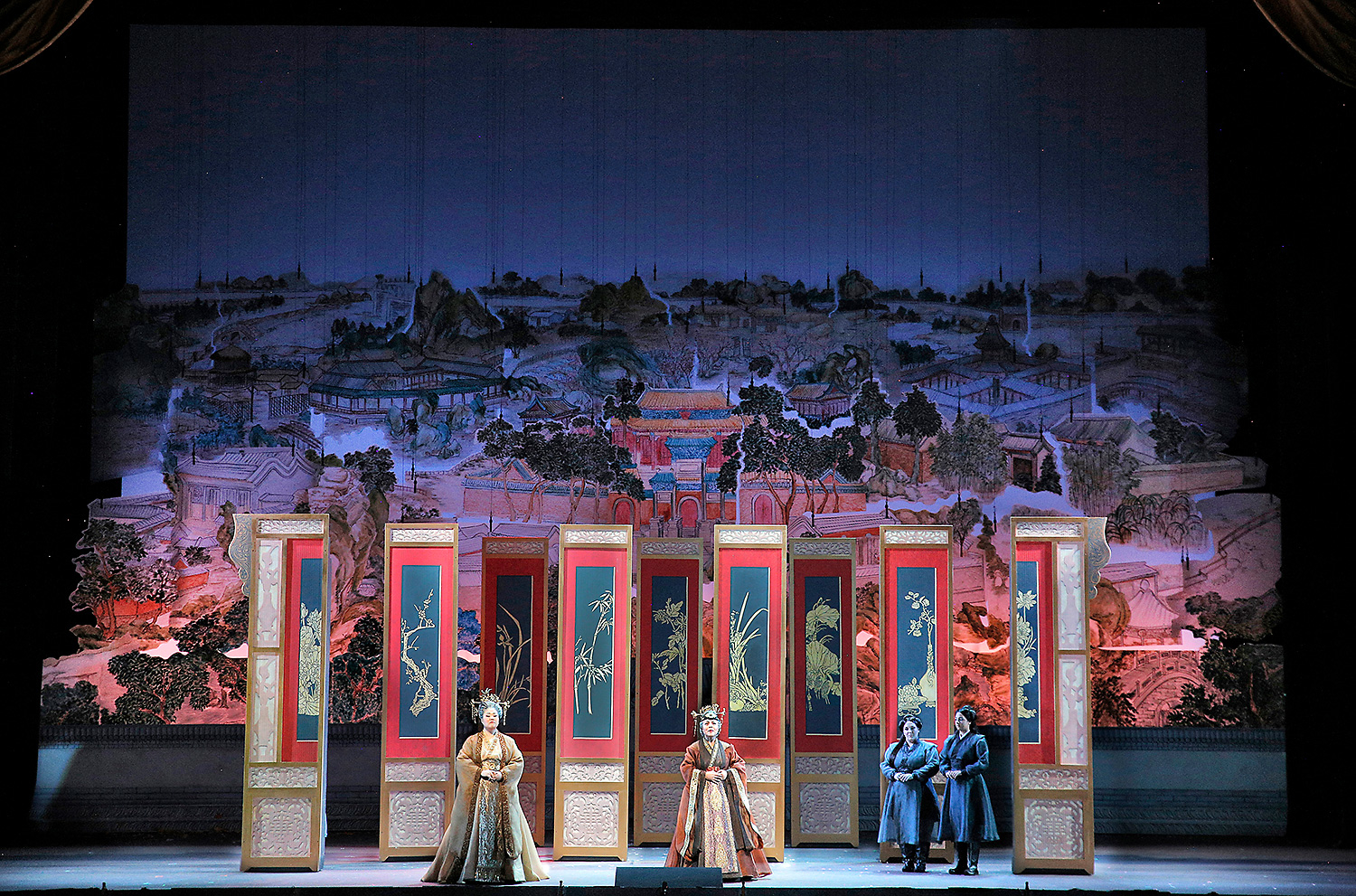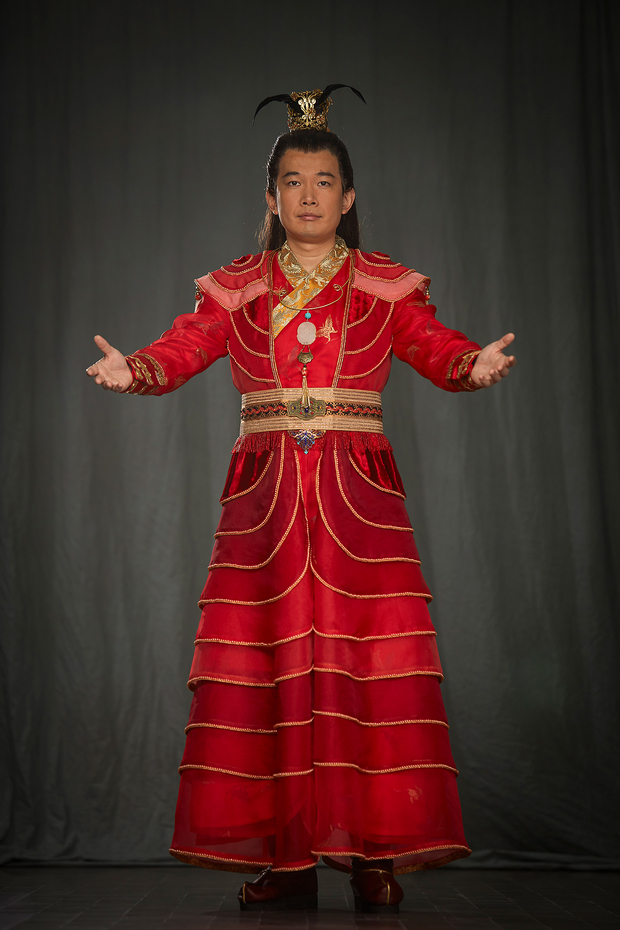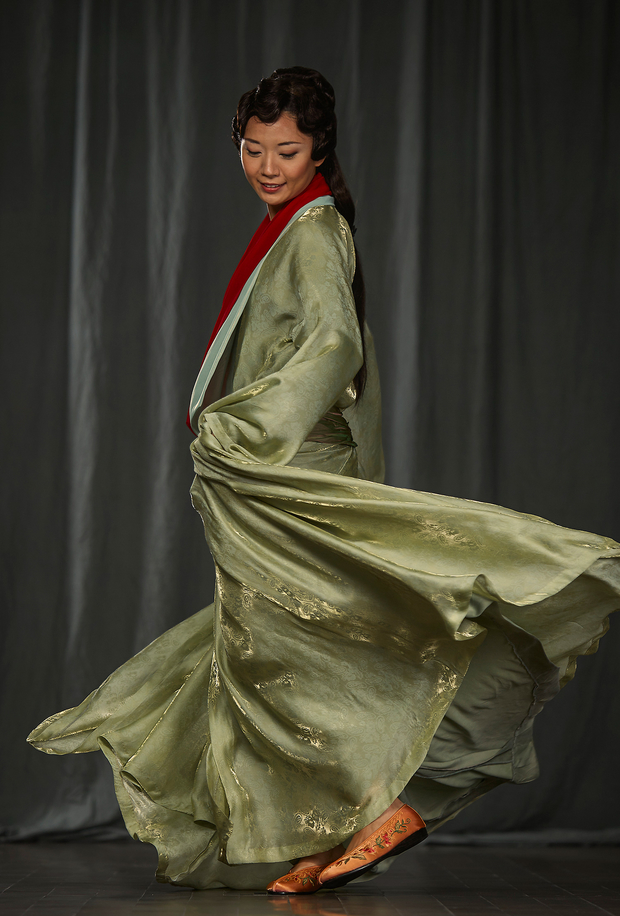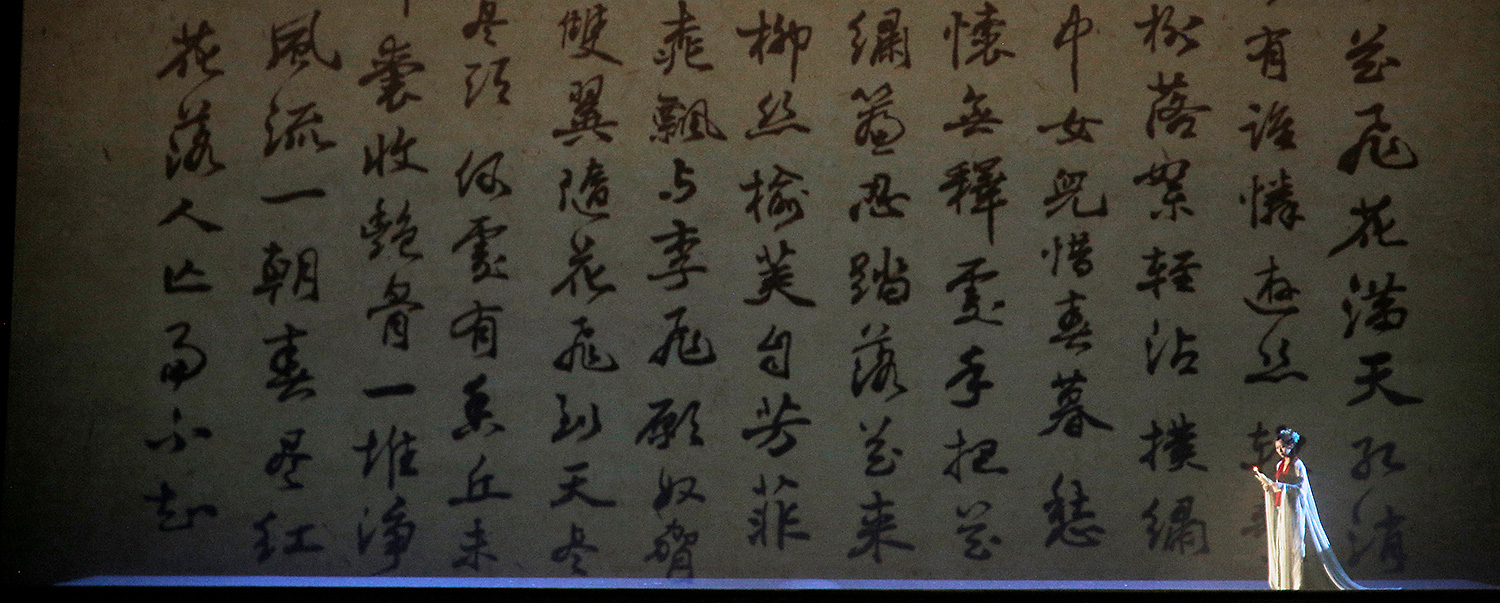Welcome to my dream,” says a Chinese monk pacing along the stage of the San Francisco Opera. So begins Dream of the Red Chamber, a new opera based on the classic Chinese novel of the same name. Its central story is a love triangle framed as Buddhist parable: the monk warns a celestial stone and flower to avoid the entanglements of reincarnation in the mortal world. But the stone has dripped dew to nourish the flower, who now owes it a “debt of tears.” The two are willing to risk it, and are reborn on earth as Baoyu and Daiyu. Baoyu is a spoiled and clever teenage boy who lives in the women’s quarters of an opulent, declining household. He shirks his schooling and whiles away days with tea, poetry, and romantic intrigues. Daiyu is a sickly, bookish girl who captures Baoyu’s heart. But death and deceit unravel everything, and the story ends as it started, with a warning that desire is pain, a fever dream. But for a moment of willful disbelief—suspended over dozens of dreamy chapters—love seems tantalizingly real.
This premise underpins the massive bulk of China’s most beloved novel, one that the opera’s creators have the unenviable task of translating into the alien genre of American opera: English libretto, Western musical idiom, San Francisco stage. The original book is more than twice as long as War and Peace, brimming with hundreds of characters, countless one-offs, glittering set-pieces, oblique Buddhist themes, literary references drawn from across the Chinese canon, and original poetry. In East Asia, its protagonists’ names have the shorthand status of Romeo, Juliet, and Hamlet. Everyone has a favorite scene or most beloved character. With so many attentive fans, and the unwieldiness of the original work, who would want to try translating the work into an English-language, Western-style opera? Desire is pain. And the desire to translate is agony.
Translation is heartbreak. Translation is treason. Translation is as inevitable as death, and about as pleasant, with less closure. With Chinese film studios, agricultural conglomerates, and real estate moguls fast arriving on America’s shores, experts in all industries are figuring out how to make the culture that comes with them, be it corporate, academic, or classical, translate for American consumers while respecting the original. This is a difficult, intensive task. I should know. As a translator for Western artists who wish to engage Chinese cultural material, I have sent clients page after page of annotated English text, running parallel to Chinese prose or poetry and marked up half to death with esoterica including: the emotional resonance and narrative function of a certain Mandopop song, and its rough Western equivalents (think the warble of Celine Dion crossed with the swagger of Shaggy); appropriate profanity for a barfight; medieval poetic metaphors for prostitution; Edwardian doggerel to give a flavor of a rhymed Chinese taunt; the meaning of choosing bear-paw over fish for dinner (which refers to a Confucian saying about knowing what you want in life); and why a classic novel may have multiple, seemingly unrelated titles (Dream of the Red Chamber is also known as Story of the Stone).
In China, great classical novels are never adapted to the stage in their entirety; a night at the Beijing Opera version of Dream will involve selected scenes from a few favorite chapters. Performing a full version would take days.
Translating and adapting Chinese material for the Western stage, which expects a full plot arc inside of an evening, requires even more exhaustive research. In my own translation work, I have had to suggest where a good “rage” aria might go, or the appropriateness of making a female lead a contralto, or lyric soprano. It is in the nature of most of these notes of mine to be disregarded. Yet, in their aggregate, the notes set a tone for the feeling of the original, and guide the final translated work.
In my own work, I have noticed that kind of translation has the effect of ruining the original: by the time I explain every nuance, cross-reference every footnote, triangulate every catchphrase, the translated draft is so overstuffed with detail that it loses all narrative propulsion, and becomes impossible to enjoy as an actual novel, play, or poem. It is arcane, technical, a cross-cultural user’s manual—which is the point. This draft is then skimmed by the client, cherry-picked, and filed away into obscurity. Yet it cannot be done any other way. Weeks or months or years later, someone will be working through a rehearsal, and something won’t be working, and the artists will need options that both serve the Western aesthetic expectations, but also preserve some fidelity to the original.
Even to describe Dream of the Red Chamber, the word “novel” is, inevitably, a mistranslation. Browsing classical Chinese fiction, whose canonical works often have a hundred chapters, feels more like channel-surfing into a show from classic network television. You know the characters, you know the basic premise, and you can tune in at pretty much any episode and enjoyably follow along. Long-term shifts might help you place an episode—the Fonz water skis over a shark on Happy Days, someone shoots J.R., Chandler and Monica hook up midway through Friends—but rarely will any given episode be crucial to the arc of the entire series. On average, chapters in classical Chinese fiction scarcely advance the overall plot. Among the bustle of supporting characters, few are load-bearing for the plot’s superstructure, yet many are beloved by fans. How much can be pared away before that mood is lost?
Dream of the Red Chamber is so beloved, by so many, for so many of its facets, that any paring will face pushback. (I was peeved by the opera’s exclusion of Wang Xifeng, a shrewish matriarch-in-waiting who would have made a magnificent role for a coloratura soprano.) Bay Area Chinese in the audience are watching closely.
Then there will be the audience members who have never heard of the book, the blank slates. Can the work connect with them? Can this novel, reincarnated as Western opera in English, repay its many and diverse investors—the artists, the fans, the first-timers—their time, money, and emotions?
In the darkened auditorium, watching final rehearsals before the September 10 premiere, sat three artists willing to risk the condensed interpretation. Bright Sheng, the composer and co-librettist, born in China and working in the United States; David Henry Hwang, the librettist, born and raised in Los Angeles, a playwright known for translating Asian themes to the American stage; and Stan Lai, the director, born to a diplomat in the United States, educated in Taiwan and California, now the biggest name in Chinese-language theater. (I have worked on projects with Hwang, but had no role in Dream of the Red Chamber.) All three men are bicultural, and at the top of their fields.
Hwang, working off the definitive English translation by David Hawkes and John Minford, began distilling the story with Sheng, who read the novel in the original language as a child in Shanghai. Every decision is fraught—the librettist must mortgage away intricacies of tone and shades of meaning to buy enough forward momentum and keep the audience engaged. For Dream, especially, this poses a problem. One of the joys of the original novel is getting lost in the world of the garden—the endless cups of tea, maids scurrying about, poetry contests, slights, affairs and reconciliations, and the parade of secondary characters. For most of the novel, we are living in this dream world. Hwang and Sheng boiled the plot down to its bitter essence, tracing the unraveling love triangle to a grand household’s decadence and decline, bookended by the monk’s metaphysical narrations. With much of the detail dropped, the libretto is more aerodynamic—necessary to launch a Western-style opera plot—but loses some of the dreamy, ethereal quality of the original. Here, the music could do some of the mood-setting work the libretto cannot on its own. A future production of Dream of the Red Chamber may benefit from some revisions to slow down the score’s swooping, cinematic lyricism. For now, the music is almost too propulsive, pushing the characters towards the next plot point without pausing to breathe and linger in the moment of tantalizing earthly attachment. In a love duet, Baoyu and Daiyu affirm human attachment in the face of cosmic indifference; the duet soars, but too high and fast. At several junctures, just as the music starts pulling us into a trance—the sort of feeling conjured by Benjamin Britten’s A Midsummer Night’s Dream or Qigang Chen’s Iris dévoilée—it rushes on to the next plot point.
Fortunately, while the novel itself is set in stone, its adaptation is not. One of the novel’s more optimistic messages is the existence of myriad possibilities that remain open, however fleetingly, while we still live in the mortal realm. A new opera can grow and evolve, as long as its creators are willing to bear the ongoing burden of translation. At a panel in early September, a few days before the premiere, the conductor, George Manahan, noted the advantages of working on contemporary opera. “I find it very fulfilling working with a live composer. I can turn around and ask, ‘what are you looking for?’” He pointed to Sheng, saying, “he’s not dead yet.”







